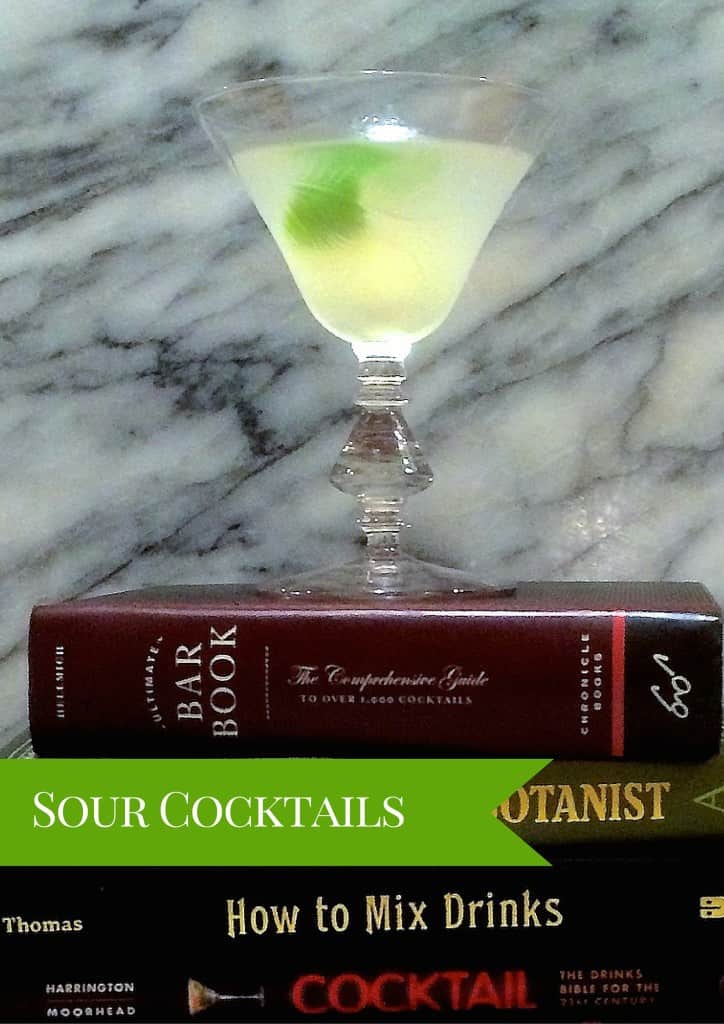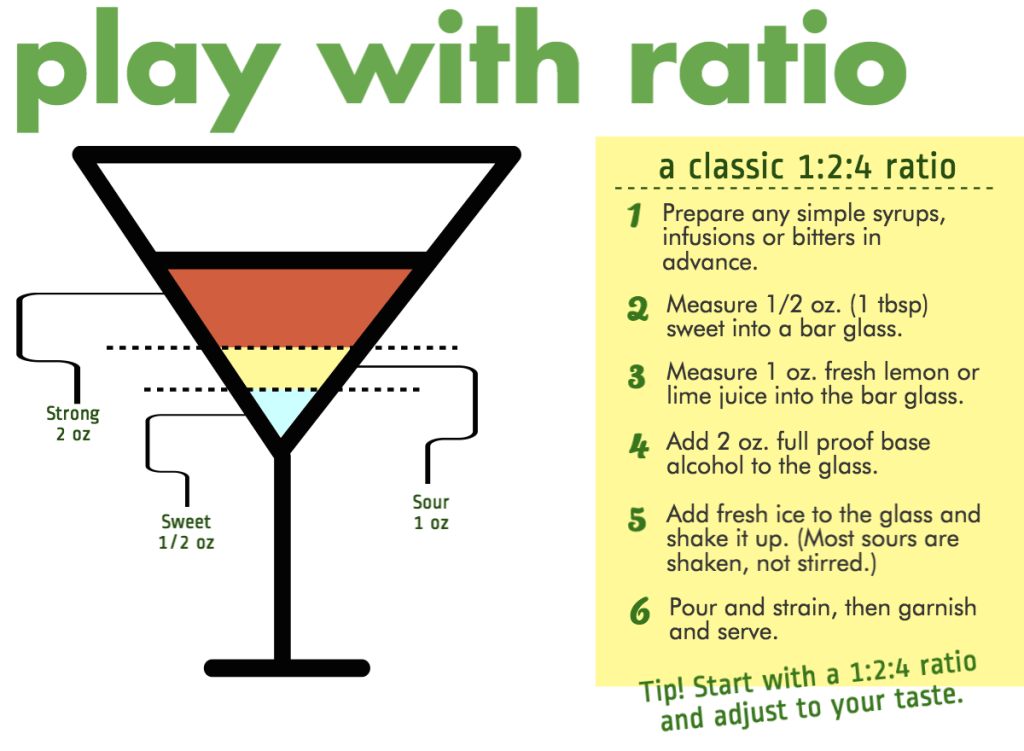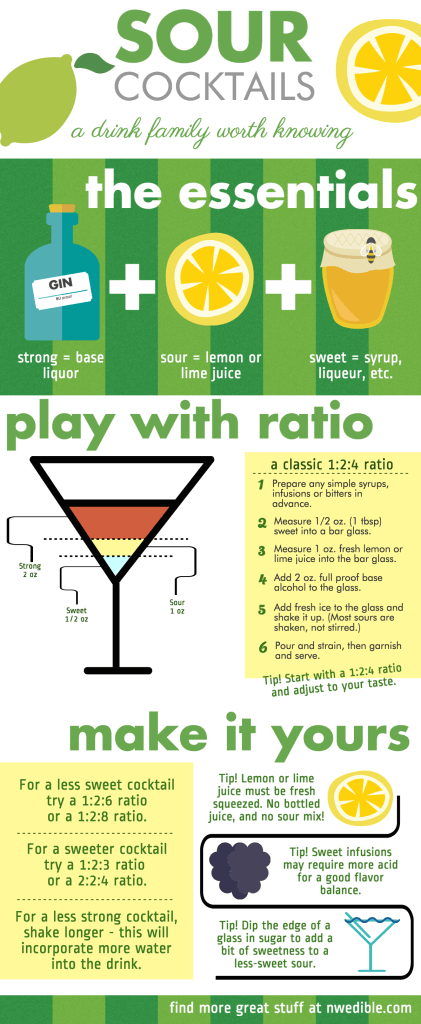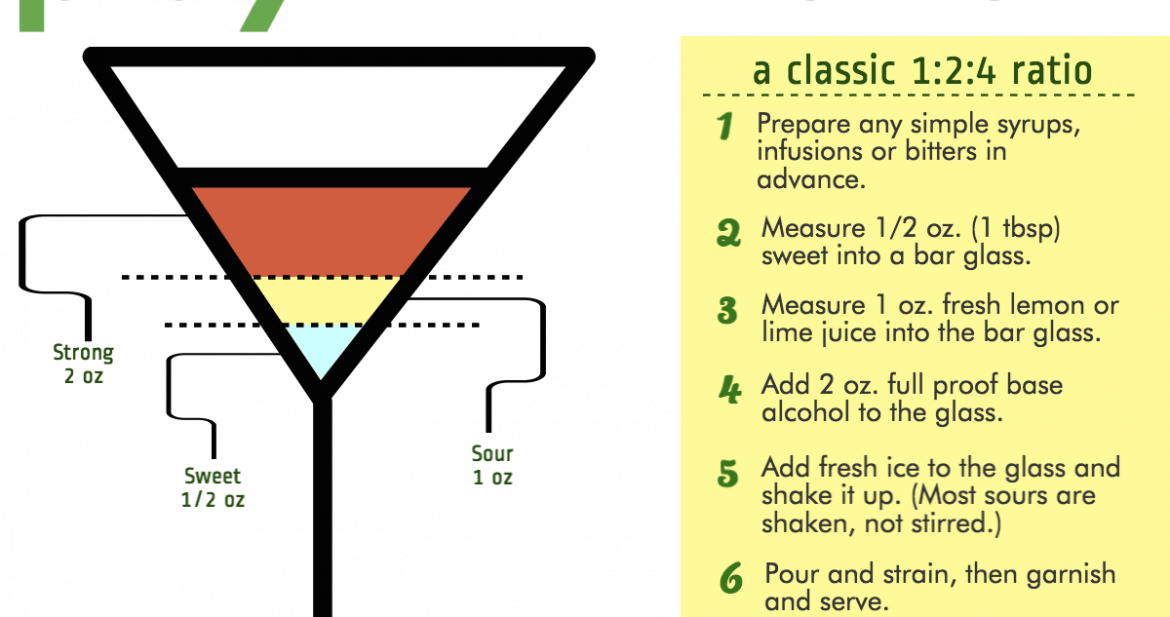Many of the cocktails I share here are subtle variations on a theme. That theme has a name: The Sour.
Ignore, for now, drinks with “sour” in the name like The Whiskey Sour or The Pisco Sour. While these drinks are in fact sours, not all sours announce themselves so obviously.
To understand this straightforward and elegant family of cocktails, all you have to understand is the ingredient composition.

Remember The “Three S” Rule
A sour will always contain:
- A Strong: The base liquor, your vodka, your gin, your bourbon, your rum. Any full proof spirit.
- A Sour: Lemon or lime juice, always freshly squeezed, no exceptions.
- A Sweet: Simple syrup, a sweet liqueur like Cointreau or St. Germaine, maple syrup, honey, the heavy syrup from canned peaches – you get the idea.
No more. No less.
Okay, okay, sometimes more. Occasionally egg white is added to a sour drink to smooth it out and add a different mouth feel, but this is not so common in modern cocktailing. And sometimes a small splash of club soda or bit of champagne can be added as a float, just to lighten a sour cocktail slightly. And of course variations of classic sour cocktails can include muddled herbs or fruit or infusions for flavor.
But the backbone always remains the three S’s – the Strong, Sour and Sweet.
Ratio and Balance
A well made sour cocktail will always be balanced – the heat of the booze moderated by the sweet and sour ingredients. No one flavor should overwhelm the others. If at any point you think, “Geeze that’s sweet!” or “Damn, that’s a puckery drink!” the balance of this type of cocktail isn’t right.
A standard ratio often used for sour cocktails is 1 part sweet to 2 parts sour to 4 parts strong. This would be 2 oz base liquor to 1 oz lemon or lime juice to 1/2 oz. sweet component.

1:2:4 is a great baseline, but here at the NWEdible Cocktail Research and Development Lab, we typically prefer less sweet cocktails, so our basic proposition for a sour cocktail starts with 1 part sweet to 2 parts sour to 8 parts strong.
The means that nearly every sour cocktail variation we test starts with 2 oz. booze, 1/2 oz lemon or lime juice and 1/4 oz sweet component. Not every cocktail is ideal at those proportions, and frequently from this baseline we add a bit more citrus or a bit more sweet to home in on the flavor profile we find ideal, but we start with that 1:2:8 basic proportion.
While most of the sours we shake end up in a cocktail (martini) glass or a coupe glass, sours are not defined by their glassware but by their ingredient component. They can be served on the rocks, up, or even blended.
Famous Family Members
Some examples of sour cocktails you’ve certainly heard of:
- The Sidecar
- The Gimlet (truly one of the best cocktails ever poured)
- The Whiskey Sour
- The Margarita
- The Daiquiri (and it’s erudite cousin, the Hemingway Daiquiri)
- The Lemon Drop

Now, don’t get the impression that all cocktails are sours – they aren’t.
The Manhattan and all it’s variants, the true Martini and all it’s variants (And I mean true variants here, like the Gibson, not random combinations of artificially flavored liqueurs that get marketed as something like a Choco-latte-rasp-tini), the Old Fashioned, the Sazerac and many many more are much loved, classic cocktails that do not include lemon or lime juice and so are not sours.
Cocktails that contain a base spirit and a fairly large quantity of something fizzy – like a Cuba libre, a gin and tonic, a Pimm’s cup or a dark and stormy – these are also in a different family, even if there are both sour and sweet elements to the cocktail.
We’ll talk more about some of the other major families of cocktails in an upcoming post. For now just know that much of the goodness in the world of libations comes from a classic combination of sweet, sour and strong.
Variations on a theme. Now that’s worth drinking to.
Hey, Look! I Made You An Infographic To Pin!


Very important information! Thank you! I clearly have a lot to learn and test ;). I really need to try all your cocktail recipes.
I also have your book (long time reader, first comment) and it. is. gorgeous. I am in love. I have started from the beginning, reading thoroughly, and relishing it. Amazing job!
Thank you so much for your kind words! I’m so glad you’re liking the book! Here’s some trivia about the book: I turned in the manuscript about 40,000 or 50,000 words over-long, so for length all the brewing, cidering, and alcohol parts were cut. I have half a book’s worth of booze-related content and half-a-mind to turn it into something useful for folks. 😀